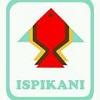PERAN EKOLOGI BULU BABI DALAM KOMUNITAS RUMPUT LAUT DI PERAIRAN PESISIR KEMA KABUPATEN MINAHASA UTARA
DOI:
https://doi.org/10.35800/jpkt.7.1.2011.18Abstract
A study on the functional role of the sea urchin, Salmacis belli, on seagrass bed near the coast of Kema, North Minahasa Regency, was done by analyzing the gut contents, the food preference, and the feeding periodicity. Sea urchins and plants were collected from the seagrass bed by snorkeling along a 100 M transect line with 30 quadrates randomly placed. The feeding periodicity was determined from the gut index in 24 hours with 3 hour intervals. The results showed that the sea urchin S. belli fed mainly on seagrass Thallasia hemprichii, Enhalus acoroides and Halimeda opuntioa. The feeding periodicity data indicated that the sea urchins actively fed in the day. The grazing capacity of the sea urchin was not affected by their body size. In high density, sea urchins could potentially cause negative impact on the seagrass bed (i.e., destruction of the meadow).










